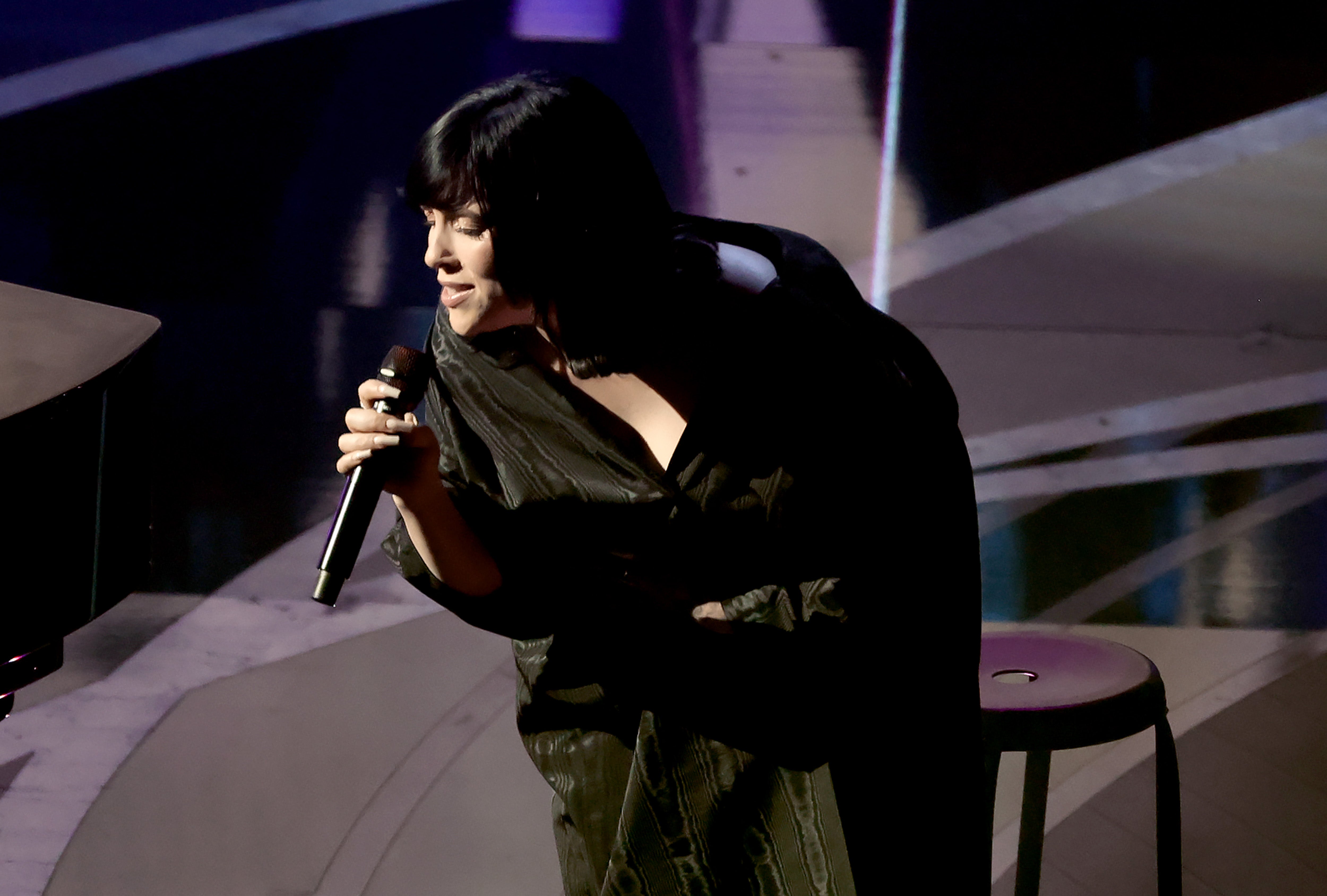Did Ed Sheeran kill the UK Singles Chart – or was it dead already?
The Official UK Charts has seen it all, from Wet Wet Wet and Crazy Frog to Ultravox and total Ed Sheeran dominance. As it turns 70, Nick Duerden reflects on how it’s changed since its launch, and speaks to experts about where it can go from here


In March 2017, something seismic happened to the UK singles chart: Ed Sheeran almost killed it. Let’s be generous here and presume that he didn’t actually mean to, but his actions rendered it, in a stroke, redundant in a way it hadn’t been in its previous 65 years.
Sheeran, the biggest pop star on the planet, had just released his third album, ÷ (Divide). By this point, more people were streaming music than buying it and Sheeran’s fans listened to the songs from ÷ over and over again, more so than they did any other songs during the next seven days. In the digital era, each click counted for another “sale”.
Consequently, the week of 8 March 2017, Sheeran dominated. While ÷ was comfortably settled at the top of the albums chart, its individual tracks punctured the singles chart like acne scars on a peachy cheek. He was at No 1 with “Shape of You”; No 2 with “Castle on the Hill”. He took No 3 with “Galway Girl”; No 4 with “Perfect”. He was not at No 5, which was instead occupied by The Chainsmokers and Coldplay with “Something Just Like This”. But he was at No 6, and No 7, No 8, No 9 and No 10. In total, Sheeran had 16 songs inside the Official UK Chart’s top 40, a feat that had never been achieved before.
James Masterton remembers that week well. How could he not? For the past three decades, he has run his Chart Watch UK page – initially in print, now online – which takes an in-depth look at each week’s top 40 and analyses it accordingly. For Masterton, that particular week was historic. “Ed Sheeran’s exploits – that he was able to take advantage of the rules that were in place at the time, where any song that was streamed enough was eligible for chart placing – changed everything,” he says.
This really was the fault of streaming rather than any one artist. A similar event had happened before, in 2009 following Michael Jackson’s death, when fans responded to his passing by streaming his songs, thereby pushing much of his back catalogue up the charts. “But,” Masterton points out, “not to this extent. It was always possible that one artist could entirely dominate, but nobody did, until Sheeran came along.”
The top 40 had once been wild and diverse, a place where Mr Blobby could nestle alongside, say, Iron Maiden, and Clive Dunn from Dad’s Army could battle it out for pole position with Jimi Hendrix’s “Voodoo Chile”. It could be eclectic to the point of absurdity, the nation’s undisciplined taste laid bare in all its doggedly unembarrassed splendour. Sheeran’s assault looked like it might threaten that diversity for good.
Mercifully, the rules were quickly changed to stop such a monopoly from happening again, and today no artist can have more than three songs from one album in the charts. “It’s to level the playing field,” Masterton says. But the charts were forever changed – the same as always yet fundamentally altered.
Later this year, the Official UK Charts celebrates its 70th anniversary. Its birthday is significant. Over its lifetime, the chart has taken both the country’s cultural pulse and set its agenda. What was in the top 40 mattered, and was often important above and beyond the music it contained, offering up a portrait of our fads and fashion, our fleeting obsessions, and giving us a lingering obsession for statistics. It was a haven for anoraks too; pub quizzes would have been poorer without it. The 1981 Christmas No 1? The Human League’s “Don’t You Want Me”. The novelty song that held Ultravox’s epic “Vienna” from the No 1 spot a year before? Joe Dolce’s “Shaddup You Face”. The biggest-selling physical single of all time? Elton John’s “Candle in the Wind 1997”, with almost five million sales. (Ed Sheeran’s “Shape of You” is the most streamed, with 300 million.)
The chart helped showcase all sorts of impressive, and dubious, talent: Crazy Frog, for one, the animated Swedish nightmare that turned a ringtone into a hit single in 2003; or Renée and Renato, the 1982 Italian/British duo who in part answered the question: what if Pavarotti had lived in the West Midlands? In the mid-Nineties, it even impinged upon politics. After the Britpop “wars” of 1995 saw Blur and Oasis going head to head for the No 1 spot – and making headline news – The Labour Party took note. When they came to power two years later, the new residents of No 10 invited representatives of both bands to a champagne-fuelled photo opportunity. (Noel Gallagher accepted; Damon Albarn didn’t.)
Enjoy unlimited access to 100 million ad-free songs and podcasts with Amazon Music
Sign up now for a 30-day free trial. Terms apply.
ADVERTISEMENT. If you sign up to this service we will earn commission. This revenue helps to fund journalism across The Independent.
Enjoy unlimited access to 100 million ad-free songs and podcasts with Amazon Music
Sign up now for a 30-day free trial. Terms apply.
ADVERTISEMENT. If you sign up to this service we will earn commission. This revenue helps to fund journalism across The Independent.
If the weekly rundown was essentially a blank canvas across which our erratic tastes were brazenly displayed, it has nevertheless been historically skewed towards male artists more than female. Few dominated the charts during the Eighties more than Madonna did, while Whitney Houston’s version of Dolly Parton’s “I Will Always Love You” is still one of the biggest-selling singles of all time. Today, there is no one more popular than Adele. But as late as 2018, there were still three times as many men in the top 100 as there were women. If the picture is slowly changing with the continued rise of superstars like Billie Eilish, Taylor Swift and Ariana Grande (in 2018, Grande became the first female artist in UK singles chart history to replace herself at No 1) it nevertheless remains an uneven playing field. According to Sarah Stennett, manager of Rita Ora, speaking to the BBC in 2019: “The gap that exists is not acceptable. I do not believe the consumer says, ‘I want to listen to more men than women.’ It’s the choice they’re given.”

The UK singles chart was born within the pages of the music weekly NME on 14 November 1952. Initially, it was restricted to just the top 12. (Pub quizzers will tell you that the first No 1 was Al Martino’s “Here in My Heart”.) Providing music with this new competitive element – who was best, who was climbing fastest, who got to No 1 – proved an immediate hit. People were hooked. Over time, it grew into a top 30, and later the top 40. Within a few years, the industry realised just how handy a barometer of collective taste this was and created its own Record Retailer chart, which instantly became the UK’s official – and around which BBC Radio 1 and, later, Top of the Pops based its format.
In the Sixties (and still to this day), the chart show aired on a Sunday evening between five and seven o’clock. For those who couldn’t wait quite so long for the big reveal, there was a telephone service that provided midweek positions. If you’d a pen handy, you could take notes.
The DJ Paul Gambaccini, who has hosted various chart rundowns on various radio stations in the UK since the Seventies, confirms that the man who presided over the weekly rundown wielded considerable power. (And it was invariably a man, until Fearne Cotton became its first female presenter in 2007.)
“In the late Sixties and early Seventies, 20 million people would tune in,” Gambaccini says. “You’re thinking that that was impossible. Twenty million? But it wasn’t.”
He explains that, back then, television networks were required to run a certain amount of religious programmes per week, and that both the BBC and ITV decided this might as well be on a Sunday, as people associated religion with Sundays. “And, with no intention of insulting any religion,” he says, “you nonetheless realised that millions were tuning into [the DJ] Alan Freeman instead and listening to the charts.”
In America, radio DJs were routinely bribed into playlisting singles to help nudge them up the chart in so-called “payola scandals”.
Everything was on a much smaller scale
“Budgets for single releases would have $100-200,000 set aside for ‘promotional expenses’, which were things like drugs for the DJs,” Gambaccini says. “But that never happened here, because everything was on a much smaller scale.” Even without such tempting incentives, every UK DJ wanted to host the weekly countdown. “Why? Because they had such a huge listenership.”
Those that did consequently became household names – Simon Bates, Bruno Brookes – in a way that more recent helmers – JK & Joel, Wes – never quite did. The former Radio 1 DJ Mark Goodier enjoyed two stints on it, the first between 1990-1992, and again in 1995-2002. Three million regularly tuned in (with another three million listening to other DJs on commercial chart stations). “It really did feel like a massive cultural event,” Goodier says.
Mark Goodier was always good at investing the rundown with a palpable sense of drama; by the time he reached the top 10, fingernails were bitten down to the quick. “I did tend to sound very excited, yes, and sometimes a bit over the top with it,” he concedes. “But if you don’t make the charts sound like there’s some energy to it, then what’s the point?”
He had his patience tested during his tenure at least twice. The first time was in 1991, when Bryan Adams had the temerity to spend 16 weeks at No 1 with “Everything I Do (I Do It for You)”, and again in 1994 with Wet Wet Wet’s “Love Is All Around”, for very nearly as long. “People who worked in radio did get thoroughly sick of them, yes,” he admits, “but the audience didn’t, and neither, for one, did Bryan Adams. So you could never be cynical about it, never.”
If you don’t make the charts sound like there’s some energy to it, then what’s the point?
Over the years, however, national excitement has dwindled. Today, songs no longer steadily climb the chart, but rather debut high, then drop low, and then out altogether, removing the narrative arc entirely. The Christmas No 1 – traditionally the most important hit of the year – now has the tang of shoulder-shrugging foregone conclusion to it: for the past four years, LadBaby have dominated with their sausage roll-themed charity singles that raise money for good causes while insulting the sensibilities of anyone with functioning ears.
The way we listen to music and interact with it has fundamentally changed. We curate our own playlists on Spotify now, or else get our fix via YouTube or TikTok. There is no more midweek phone service, and though head-to-head battles may still occasionally occur, Huw Edwards doesn’t report on them on the BBC News.
These days, the charts tend not to make headline news, unless of course Ed Sheeran is doing something contemptible to them, as he did back in 2017. Today’s average listening figure for Radio 1’s weekly chart show is 1.5 million, while Paul Gambaccini’s nostalgia-drenched Pick of the Pops on Radio 2 on a Saturday afternoon rakes in 2.7 million. Mark Goodier, meantime, now hosts shows on Greatest Hits Radio, where they play all the old hits all the time, “because that’s what people seem to want”.
But, he warns, let’s not write an obituary on the top 40 just yet: “It does remain important to a great many people, and to the industry.”
James Masterton concurs, but then he has a vested interest in its ongoing survival. “The charts will never be irrelevant,” he insists. “Even the coolest, hardest, most posturing drill or grime rapper is still absolutely thrilled when their song makes it into the top 20. Just check out their social media profiles. When they have a big hit, they celebrate wildly.”
And that’s what the chart always was, ultimately: a celebration. So while it may be quieter now, a shadow of its former self, then who, at 70, isn’t? It lives on, a tirelessly dedicated shop window to what’s up, what’s down, and who, for the next seven days at least, is reigning supreme, top of the pops.
If Ed Sheeran can’t kill it, perhaps nothing can.
Join our commenting forum
Join thought-provoking conversations, follow other Independent readers and see their replies
Comments


Bookmark popover
Removed from bookmarks